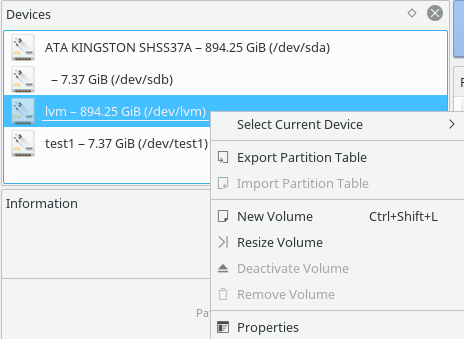After 1.5 years in development I would like to announce a new version of KDE Partition Manager and KPMcore library.
The main highlight of this release is that GUI does not need to run as root user. Instead we use KAuth framework (note that in the future we plan to use lower level Polkit API directly but this work is not started yet). GUI runing as unprivileged user also makes our Wayland port work perfectly fine. As part of porting Partition Manager to KAuth we also did the following ports:
- KPMcore backend was ported away from libparted to sfdisk (part of util-linux). Many thanks to util-linux maintainer Karel Zak who promptly fixed most of the sfdisk bugs that I noticed during porting.
- Caio Jordão Carvalho ported S.M.A.R.T. code away form unmaintained libatasmart to smartmontools.
These two ports make KPMcore and KDE Partition Manager more portable. In the near future we might see port to FreeBSD.
Other changes include:
- Better support for LUKS2. Now we can resize LUKS2 containers as long as they don’t use advanced features like dm-integrity. At the moment KDE Partition Manager still creates LUKS1 encrypted partitions (LUKS2 creation is not exposed in the GUI) but KPMcore has code to create LUKS2 encrypted partitions, so other users of KPMcore library (like Calamares installer) will be able to implement LUKS2 creation using KPMcore 4.0.
- Detection support for Apple’s APFS filesystem and Microsoft’s Bitlocker.
- Many of the KPMcore classes now use d-pointers, which in the future releases will help us to maintain binary compatibility (ABI) a bit better.
- We now use more modern C++ features. This won’t be visible to users but it’s always good to have a more maintainable codebase.
- Some bugfixes, in particular related to LVM.
List of all changes can be found in commit log at
https://invent.kde.org/kde/kpmcore
https://invent.kde.org/kde/partitionmanager
Downloads:
https://download.kde.org/stable/kpmcore/4.0.0/src/
https://download.kde.org/stable/partitionmanager/4.0.0/src/

